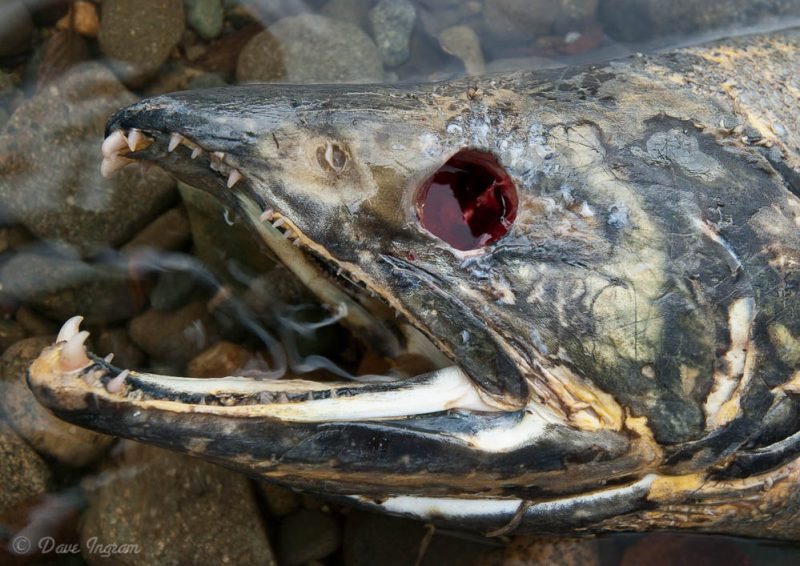Guest post by Jennifer Sutherst
As our noses are affronted with the smell of salmon carcasses feeding our aquatic habitats, our local streams and rivers are playing host to the completion of the salmon life cycle as adult spawners return to lay their eggs and die. We saw a huge run of pink salmon a reasonable run of chum are just finishing and coho are coming on strong. Coho will continue to spawn right up to Christmas in some streams.
The eggs are laid in gravel nests called “redds” in the bottom of creek beds. Redds are very hard to see and with fall rains the water is often too murky to see anything. By now there are redds everywhere and are impossible to avoid if you were to enter the water for any reason.

Over the winter months the eggs will incubate in these redds before the juvenile salmon fry emerge in the spring. Salmon redds are depressions created by the female’s body and tail. She will dig a number of redds depositing a few hundred eggs in each one and allowing the stream current to deposit the drifting gravel over top of the previous redd.
Although there may not be many visual clues at this time of year, the Tsolum River and its tributaries are a salmon nursery and it is best to tread lightly around this sensitive habitat. In particular try to stay out of the water as much as possible as walking on top of redds can crush the eggs and compact the gravel.
The developing salmon eggs are located in the spaces formed by the gravel and compressing the gravel cuts off the availability of oxygen to the eggs, effectively smothering them and potentially crushing them. One study showed that just one step on a nest of eggs could immediately cause up to 47% mortality. Additionally the eggs that are crushed begin to decay and the spores from the decaying eggs colonize the healthy eggs and kill them also.

So, it is a good idea to try and avoid the water when we are out hiking, horse-back riding or using motorized recreational vehicles and to keep dogs on leashes and out of the river and its tributaries.
Even small creeks and ditches may contain fragile salmon eggs. Future generations of fish will thank-you for your efforts.
About the Contributor:
Jennifer Sutherst is a Biologist / Environmental Educator for the Tsolum River Restoration Society